Log book of what I'm learning, or maintaining. And to practice posting daily about things.
Don't wanna be here? Send us removal request.
Text

I posted 13 times in 2022
0 posts created (0%)
13 posts reblogged (100%)
Blogs I reblogged the most:
duine-aiteach
taispinimoragam
maevefinnartist
zoycitem
gaeilge-rules
I tagged 0 of my posts in 2022
Get your Tumblr 2022 Year in Review →
And I didn't give any gifts. But the entire purpose of starting this was just meant to be a personal journal about my language learning, and that fell right on it's stupid face when I got the rona. But at least I'm still doing the learning part, just not doing the writing it all down to improve the learning process part. Eventually though... probably... maybe. Idk.
8 notes
·
View notes
Text
<Reblog to get a sword.> o()xxx[{::::::::::::::::::::::::::::>
192K notes
·
View notes
Text
cáca (cake) vs caca (poo)
bríste (trousers) vs briste (broken)
éire (ireland) vs eire (burden)
léamh (reading) vs leamh (weak)
órla (name meaning "golden princess") vs orla (vomit)
seán (irish for jean/john) vs sean (old)
snámh (swim) vs snamh (dislike)
and that, friends, is why remembering the fada is extremely important in irish. you wouldn't want to go to the gaeltacht and order a caca instead of a cáca, would you?
bonus: séan with the fada on the e means "deny"
2K notes
·
View notes
Photo


An Spás Amuigh as Gaeilge • I worked off of this post, Na Planéid by @cymraeglangblr
358 notes
·
View notes
Text









"Battling Béarlachas" by @irinn_co on instagram
"As aspiring Gaeilgeoirí, we read a lot in, and about, Gaeilge. But for us at Irinn, a consistently frustrating part of that is the amount of Béarlachas – [English] loan words with colonial origins. Loan words, in general, are wonderful and necessary, however for various long-winded sociolinguistic reasons they're often used in place of a native word in Gaeilge. We keep a running list whenever we find them, the original 'Fiórfhocail'. Let's reclaim our words!"
237 notes
·
View notes
Text




positive affirmations as gaeilge from sli_na_ruadh on instagram
289 notes
·
View notes
Photo
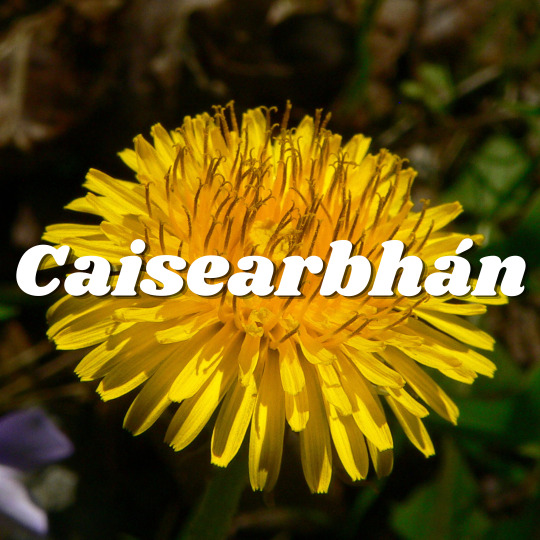

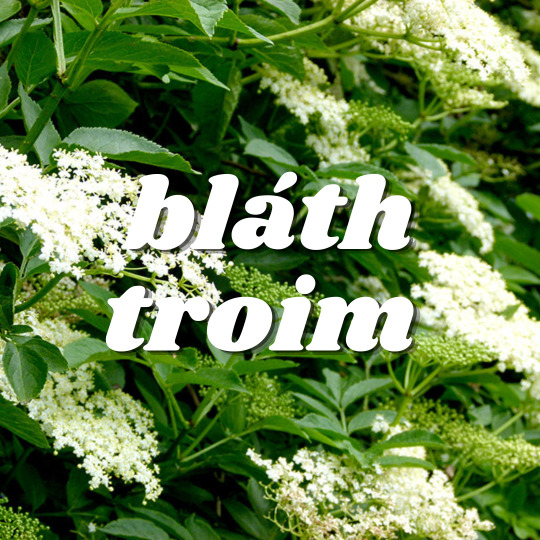
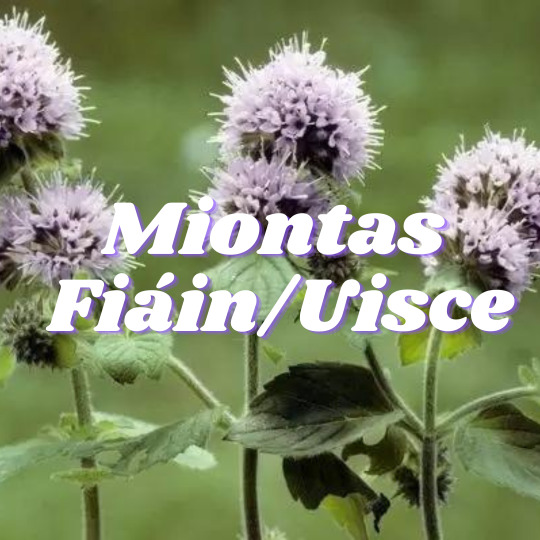


Luibheanna sealgaireachta agus caora as Gaeilge
Dandelion - Caisearbhán
Curly Dock - Duga Chatach
Elderflower - Bláth Troim
Wild/water mint - Miontas Fiáin, Uisce
Blackberries - Sméara Dubha
Wild Garlic - Creamh
453 notes
·
View notes
Photo
Where I'm from, a "hoodie" is called a bunnyhug, so I'm wondering if that would be said coinínbarróg, coiníncuach, or some other way.









Éadaí as Gaeilge
294 notes
·
View notes
Text
Irish Grammar Notes - Séimhiú (lenition)
In a nutshell, Irish séimhiú (lenition) is a mutation of consonants to make them sound softer and to make the speech smoother. Séimhiú is marked by adding a letter ‘h’ after a consonant. Nine consonants pick up séimhiú: b, c, d, f, g, m, s, p, t.
bean → bhean cara → chara deartháir → dheartháir fuinneog → fhuinneog guí → ghuí mála → mhála súil → shúil pota → phota teach → theach
Séimhiú changes the pronunciation of a word! Here are some yt videos for reference video 1 (Ulster dialect), video 2, video 3.
Exception
There is a certain exception no this rule - dental consonants d, t, s do not pick up séimhiú; theacht (no-dental t) but tine (dental t). I recommend checking the IPA (International Phonetic Alphabet) spelling of a word whenever you’re not sure if a consonant is dental or not bc it can be tricky :)
When do consonants pick up séimhiú?
After the definite article ‘an’ - in feminine nouns in nominative singular, bean → an bhean - in masculine nouns in genitive singular, fir → carr an fhir
After the vocative particle ‘a’, cairde → a chairde
After possessive pronouns, madra → mo mhadra
After prepositions ‘de’, ‘faoi’, ‘mar’, ‘ó’, ‘roimh’, ‘trí’, ‘um’, ‘idir’, ‘ar’, maidin → roimh mhaidin
After the preterite and conditional of the coupla, duine → ba dhuine
After past particles ‘níor’ and ‘ar’, múinteoir → níor mhúinteoir é
After particles ‘a’, ‘má’, ‘ní’, tuigim → ní thuigim
After numers 1-6 when counting people or things, bó → aon bhó
After constructions of adjective + noun written as compounds, fear óg → ógfhear
If the word is the second part of a compound word, gorm → dúghorm
If the word is a modifier in some fixed constructions as ‘rainy weather’ báistí → aimsir bháistí
In some adjectives in some contexts, deas → bean dheas
After most prefixes such as ‘an’, ‘ró’, ‘ais’, beag → ró-bheag [full list to be updated]
How does it look like in a sentence?
So, to say that the weather was rainy but I took my dog for a walk, you need to modify certain consonants like this:
Bhí an aimsir bháistí ach thóg mé mo mhadadh ag súil.
Remember to take it easy, everything comes with a practice! Also, I’m neither native nor fluent Irish speaker, so feel free to correct me if I’ve made any mistakes.
129 notes
·
View notes
Text
Posts you may be looking for:
Introduction post
General:
Contemporary Irish writing
Fanfiction
Lists of Irish creators/Irish media
What the tags I use mean
LGBT+:
LGBT+ Terms in Celtic languages
Overview of LGBT as Gaelige
LGBT+ flag edits (list)
Article about Irish LGBT books
Irish LGBT+ media
Trans healthcare post
Learning Irish:
Praying as Gaeilge (Catholic)
Winter holiday terms
Irish verb sheets
Saying 'I love you'
If you’re looking to learn Irish I would recommend my staidear tag where everything relating to learning goes.
194 notes
·
View notes
Text
When the tuiseal ginideach (genitive case) is used
1. Seilbh (Ownership)
Hata Sheáin (Seán's hat) Seol an bháid (The boat's sail) Teach Mháire (Máire's house) Cóta an f hir (The man's coat) Gúna an chailín (The girl's dress) Geansaí an bhuachalla (The boy's jumper)
2. Dhá ainmfhocal le chéile (When two nouns come together)
Seomra ranga (Classroom) Mála scoile (School bag) Clár ama (Timetable)
3. An t-ainm briathartha roimh an ainmfhocal (Verbal noun aka ag in front of the noun)
Ag imirt peile (Playing football) Ag dúnadh an dorais (Closing the door) Ag léamh leabhair (Reading a book) Ag foghlaim gramadaí (Learning grammar)
4. Réamhfhocal comhshuite (Following a compound preposition)
Ar fud na tíre (All over the country) Ar feadh seachtaine (For a week) In aice na háite (Beside the place) Ar chúl an tí (Behind the house)
5. Cainníocht (Measurement)
A lán oibre (A lot of work) Beagán airgid (Some money) Go leor trioblóide (A lot of trouble) Níos mó matamaitice (More maths)
6. I ndiaidh na bhfocal seo a leanas (After the following words)
Chun oibre ([Going] to work) Timpeall na scoile (Around the school) Cois tine (Beside a fire) Trasna na farraige (Across the sea) "Dála an scéil" ("By the way")
368 notes
·
View notes
Text
I relate to all of this.... so it's wizard hunting time.

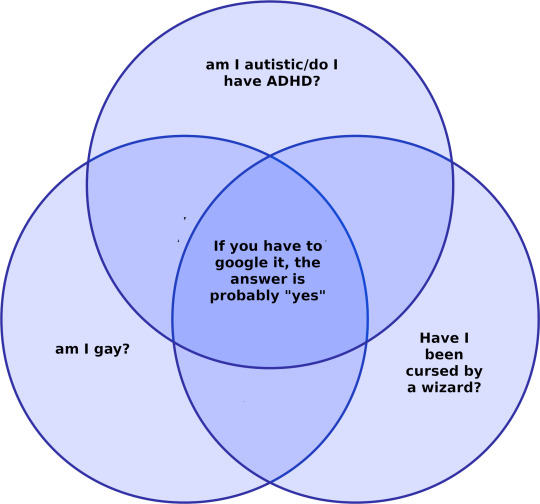
this emerged in my head when I was trying to drive
256K notes
·
View notes
Text
Winter vocab as Gaeilge
geimhreadh - winter
sneachta - snow calóg shneachta - snowflake fear sneachta - snowman fuacht (noun) - cold fuar (adjective) - cold aimsir sheaca - freezing weather gealán - aurora réalta - star cuileean - holly drualus - mistletoe gealbhan - sparrow corcrán coille - bullfinch meantán - tit fia - deer réinfhia - reindeer
seacláid the - hot chocolate scailtín fíona - mulled wine arán sinséir - gingerbread maróg - pudding cnóire - nutcracker
sleamhnán - sledge slaghdán - cold (illness) pluid - blanket teallach - fireplace teolaí - cozy lámhainní - gloves scaif olla - wollen scarf cóta te - warm coat
coinneal - candle soilse Nollag - Christmas lights fleasc Nollag - Christmas wreath crann Nollag - Christmas tree carúl Nollag - Christmas carol beithilín - nativity scene féirín - present Saintí / Daidí na Nollag - Santa Claus
an Nollaig - Christmas saoire na Nollag - Christmas holiday Óiche Nollaig - Christmas Eve Óiche Nollaig Beag - New Year’s Eve

224 notes
·
View notes
Note
I'm baffled by Irish grammar... Is there any good resource online? I'm confused by "ar" causing somehow both lenites and eclipses, it seems conpletely random and I can't find the rules for that one. How do I know which one it is? I've been unable to google a website that'd explain that bit... :(
hey, sorry for leaving this so long unanswered, but I wanted to make sure I was correct before actually answering. this is something I can answer myself. I actually don't know what lenites and eclipses are but just guessing, I think you're referencing how nouns have another consonant placed in front of them (an urú; ag an mbus) and how nouns have a 'h' after the first letter (a séimhiú [think how séimh means soft!]; an bhean)
Séimhiú:
Verbs: verb in past tense is in question form (besides the exceptions of abair, bí, téigh, faigh, feic, déan) so for example, "ar cheannaigh?", "ar chuala?", "ar dhún?".
Nouns: (it gets pretty complicated here) 'ar' is a simple preposition that means "on" and keep that in mind while I discuss this. When 'ar' is used without the article, it applies a séimhiú on the noun, so "ar Mháire", "ar chapall", "ar chnoc". In Irish, we don't say "Mary is angry", we say "Anger is on/upon Mary". To say this, we would say "Tá fearg ar Mháire", which, as you can see, makes the noun take a séimhiú. to put it simply, 'ar' is used to express emotions/feelings or illnesses.
Urú:
Nouns: a noun only takes an urú with 'ar' when the article is put with it, so "on the". Examples of this are "ar an mbord", "ar an gcnoc", "ar an mbóthar"
Nothing:
yeah! there's cases when 'ar' takes nothing. its frustrating, I know.
Verbs: remember when I said that verbs in question form in past tense take a séimhiú with 'ar'? the exception to this is the autonomous form where there is no evident voice or when the person/thing doing the action is not known (saorbhriathar as Ghaeilge!) so "ar glaodh", "ar cuireadh" and "ar dúnadh"
Nouns: this relates again to the simple preposition. when 'ar' refers to the state or condition of a person, or thing, it is not followed by a séimhiú or urú. an example of this is "Tá Seán ar buile" meaning Seán is furious.
DNTLS: this is a rule spreading all through Irish where you cannot place a séimhiú or an urú on a noun if the letters conflict! the letters included in this rule are d, n, t, l, s. if these letters meet, you cannot do anything, you simply leave it be for the sake of speech. an example of this is “ar an talamh”. You would expect an urú on the t, but because it’s an n and a t coming in contact, you can’t put the urú (coincidentally a d) on the t. We do it in speech but not in writing.
if I remember more rules to do with 'ar' I will add to this post. in terms of other resources for Irish grammar, if you're serious about learning the language I would genuinely purchase the book "Graiméar Meánscoile" by Diarmaid Ó Tuama, as its really clear in its grammar explanations and I've even used a few samples from it for this. It's helped a lot. unfortunately I couldn't find a free pdf version ;;
Go n-éirí leat! Go raibh míle maith agat! If you have any more questions feel free to ask.
161 notes
·
View notes
Text
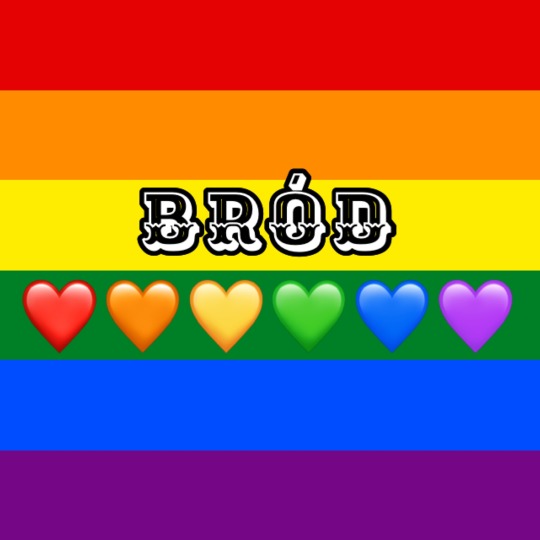
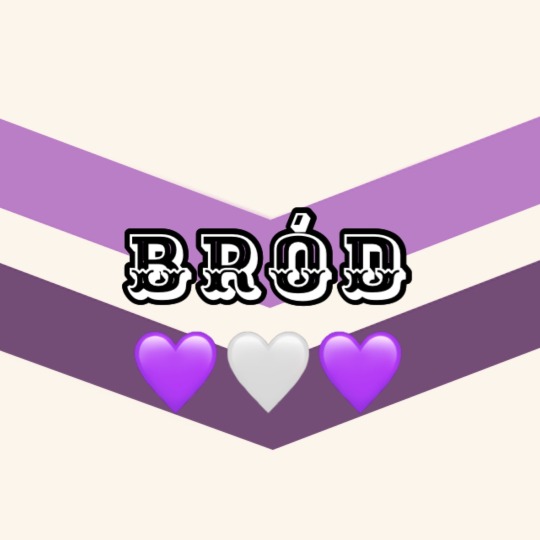
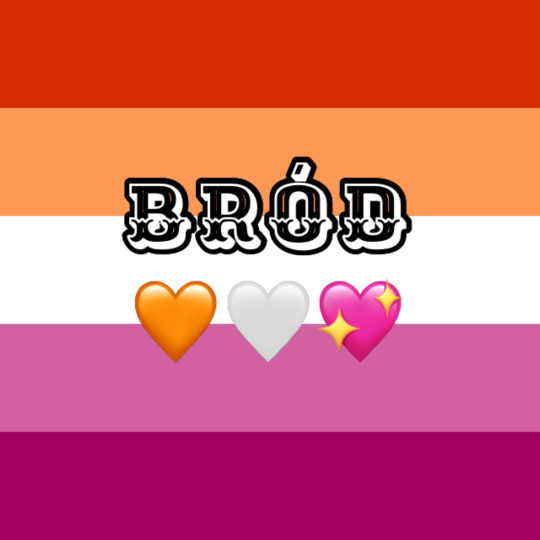

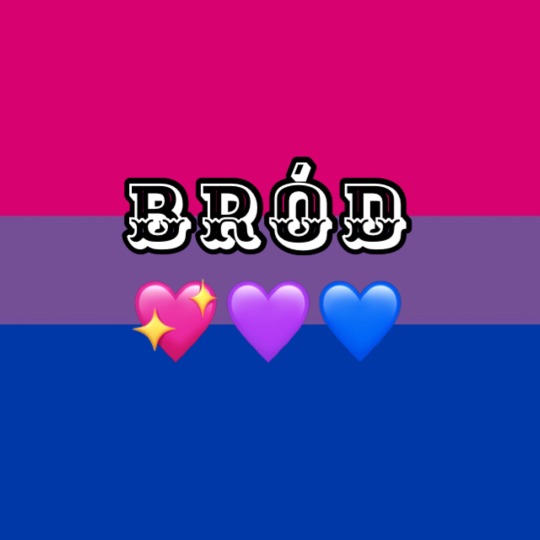



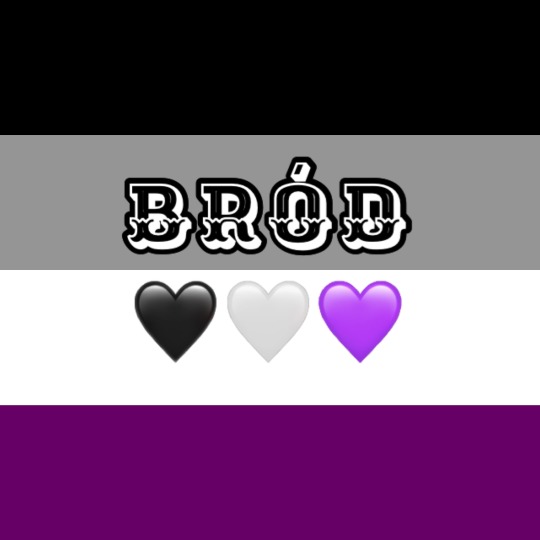

Mí Bród sona daoibh! // Happy Pride Month!
[ID: ten images of pride flags with the word ‘bród’ (pride) and heart emojis in the flag’s colours written on top. Pride flags are: rainbow, queer chevron, orange and pink lesbian, @gayflagblog’s gay man, bisexual, pansexual, transgender, nonbinary, asexual and aromantic. End ID.]
[ID as Gaeilge: deich pictiúir faoi bratach bród agus an focail ‘bród’ agus emoji croí sa dathanna seo. Is é bogha báistí, aiteach, leispiach oráiste agus bándearg, aerach ó @gayflagblog, déghnéasach, il-ghnéasach , trasinscneach, neamh-dhénártha, éighnéasach agus gan-rómáns na bratach bród.]
766 notes
·
View notes









